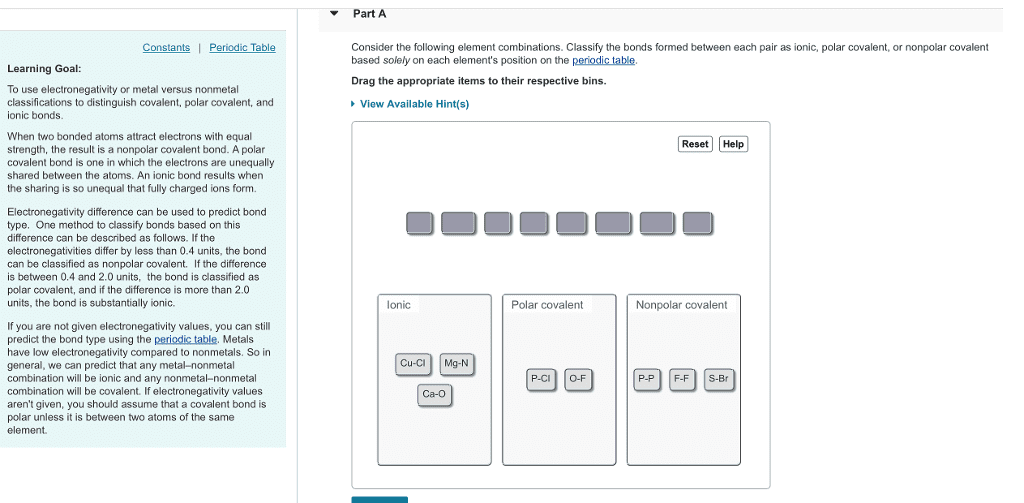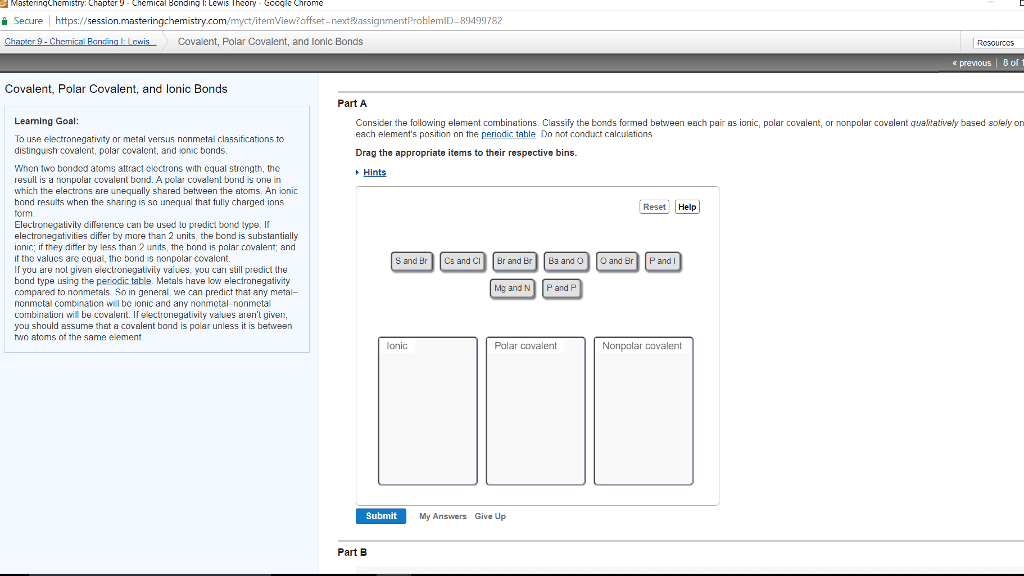CHEM10007 Lecture 7: Lecture 7 - Electronegativity, Polarised Bonds & Intermolecular Forces

LECTURE 7
ELECTRONEGATIVITY, POLARISED BONDS &
INTERMOLECULAR FORCES
FORCES BETWEEN MOLECULES
•Covalent bonds (STRONG!) within the H2O molecule.
•These are intramolecular forces, and are much stronger than any intermolecular forces.
•Weaker forces between the molecules - water normally melts at 0 degrees C and boils at 100
degrees C. (Intermolecular forces)
•Intra - inside a molecule
•Inter - between molecules.
ELECTRONEGATIVITY
•When a metal and a non metal react, one or more electrons are transferred from the metal to the
non metal to give ionic bonding.
•When two identical atoms react, a NYvLVPnt MYnO is formed in which electrons are shared equally.
•When two different atoms react, a pYVLr NYvLVPnt MYnO is formed in which electrons are shared
unequally.
•The unequal sharing of electrons between two atoms is described as PVPNtrYnPRLtTvTtc4 the
relative ability of an atom in a molecule to attract shared electrons to itself.
•It is the electron attracting power of an atom.
•The higher an atom’s electronegativity value, the closer the shared electrons tend to be to that
atom when it forms a bond.
•Chemists determine electronegativity values for the elements by measuring the polarities of the
bonds between various atoms.
•Electronegativity generally increases going towards the right of a period, and generally decreases
going down a group.
•Therefore, the top right hand corner of the PT is the most electronegative, and the bottom left
hand corner is the least.
•As atoms increase in size down a group, the outer shell electrons are further from the nucleus
and the attractive force between them and the nucleus is less; the electronegativity is less.
•Core charge increases across a period from left to right, therefore the atoms become smaller,
and electronegativity increases.
•The range of values of electronegativity is from 4.0 for Fluorine (the most electronegative element)
to 0.7 for cesium and francium (the least electronegative elements).
•The polarity of a bond depends on the different between the electronegativity values of the atoms
forming the bond.
•The element in the bond that is closer to fluorine (top right) is delta negative, the element further
away is delta positive.
•If the atoms have very similar electronegativities, the electrons are shared almost equally and the
bond shows little polarity.
•If the
atoms

have very different electronegativity values, the bond is very polar.
•In extreme cases, electrons are actually transferred, forming ions and an ionic bond.
•Eg. When an element in group 1 (with electronegativity values of about 0.8) reacts with an
element from group 7 (with electronegativity values of about 3), ions are formed and an
ionic substance results.
•If a molecule has 2 different elements, Eg OH
or HF, it will be non polar.
•If a molecule has 2 of the same element, e.g.
O2, H2, I2, it will be polar as their
electronegativity will be the same.
•Electronegativity causes intermolecular forces.
•If involved in covalent bonds and have high electronegativity, they will
suck the electrons in the covalent bond towards them.
•Group 18 generally don’t participate in covalent bonds.
ELECTRONEGATIVITY VALUES
•Metals have low electronegativities
•Eg. Mg=1.2, Ca=1.0, Na=0.9,
K=0.8
•Most non-metals have high
electronegativities.
•Eg.
F=4.0,O=3.5,Cl=3.0,N=3.0,H=2.2
•If atoms of the same element are
bonded, it’s a non polar bond due to
the equal sharing of electrons, due to
the match in electronegativity.
Document Summary
F=4. 0,o=3. 5,cl=3. 0,n=3. 0,h=2. 2: if atoms of the same element are bonded, it"s a non polar bond due to the equal sharing of electrons, due to the match in electronegativity, delta means little - delta positive = just a little positive. 2: in hydrogen fluoride, f attracts the bonding electrons more than h, fluorine is more electronegative than hydrogen. Using electronegativity to determine bond polarity: the polarity of a bond increases as the difference in electronegativity between the atoms increases. Intermolecular forces: covalent bonding arises from the sharing of electrons. So how do intermolecular forces arise: there are several types of intermolecular forces, dipole-dipole attraction, hydrogen bonding, dispersion forces. Covalent bonding: metal + non metal = ionic, non metal + non metal = covalent. Non polar covalent bond: electrons are shared equally between atoms with the same electronegativity values, eg. Polar covalent bond: polar covalent bonds occur when the electrons are shared unequally between atoms with different electronegativity values, eg.



